Art World
We Spoke to the ‘Anguished’ Barcelona Residents Fighting to Prevent the Completion of Gaudí’s Famed Sagrada Familia
The locals' bag of tricks includes an alternative architectural plan for the entrance to the famous basilica.
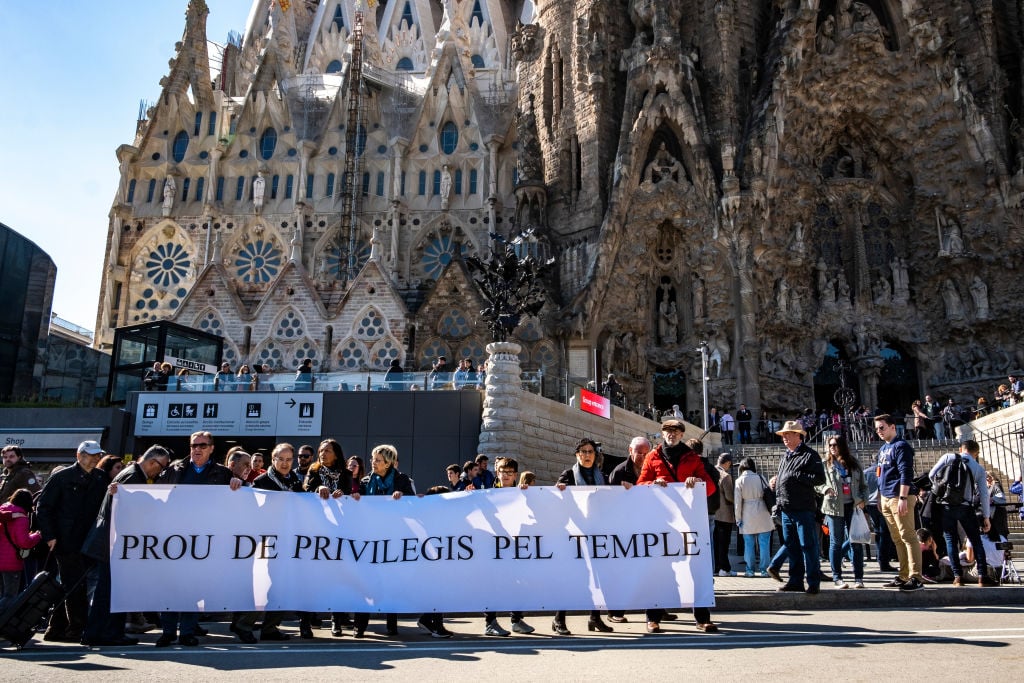
The locals' bag of tricks includes an alternative architectural plan for the entrance to the famous basilica.

Jo Lawson-Tancred

The Sagrada Familia is the best known landmark in Barcelona, with its crown of magnificent towers punctuating the city’s skyline. The intricate gothic design was modernized with the Art Nouveau pizzaz typical of its maker, the visionary Catalan architect Antoni Gaudí. With construction starting 140 years ago in 1882, the church’s millions of annual visitors are often surprised to learn that it so far remains uncompleted.
As for local residents, however, it is said that most have given up hope of seeing the finished basilica in their lifetimes. The project has been delayed over the decades invariably by civil war, underfunding (progress has predominantly relied on private donors), conservation, and lengthy permit applications. A completion year of 2026—the centenary of Gaudí’s death—was finally suggested in 2019, but this optimistic target was also thrown off course by the pandemic.
Not everyone has been disappointed by these interruptions, however, as the basilica’s completion is not welcomed equally by all the city’s inhabitants. As anyone who has been forced to live in close proximity to building works for an extended period might understand, a growing movement of locals have grievances about the construction. Those who have the most at stake? The 3,000 residents of an apartment block that will have to be razed in order to realize Gaudí’s vision for the grand entrance of the building.
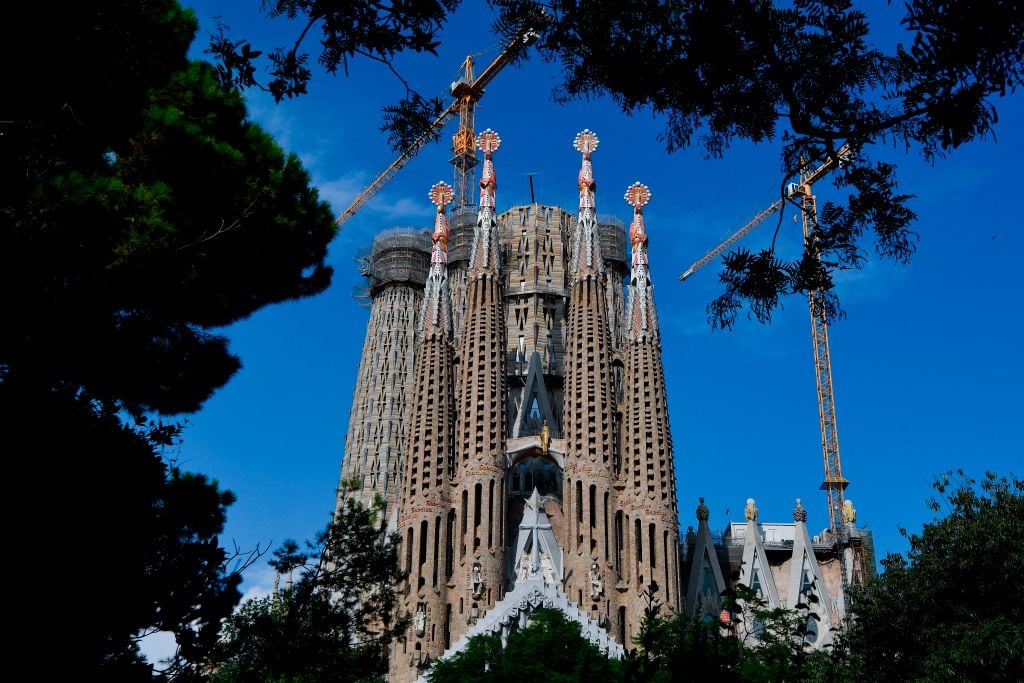
Sagrada Familia. Photo by Pau Barrena/AFP via Getty Images.
Gabriel Mercadal Prats has lived in the immediate area of El Poblet with his family since 1982, and is an active member of the Association of Neighbors of the Sagrada Familia (Associació de Veïns i Veïnes Sagrada Familia), a group formed to help local residents raise their voices on the topic. Although he has heard endless complaints from his neighbors about the noise, which he told Artnet News has sometimes continued into the night, “the concern, even the anguish, is related not to the ongoing construction, but to the final development of the works,” he said.
Prats is referring primarily to a sprawling staircase that would complete the grand entrance of the building’s Glory facade on Mallorca Street. These steps would reach over the street, allowing traffic to pass underneath, and spread out, reaching towards the parallel Valencia Street. Gaudí imagined this structure long before the apartment block was built directly opposite the basilica, between these two parallel streets.
Desperate residents are clinging to hope that they can save their homes by arguing that the elaborate Glory facade was not even part of Gaudí’s original plans. Their argument, which has formed the basis for a lawsuit filed against the city council, hinges on the fact that a fire destroyed the architect’s original papers. Gaudí’s intentions have been pieced together and inferred from surviving photos, preliminary sketches and the claims of his assistants, and the Glory facade’s staircase is one of the more contentious elements of this reconstruction.
“We can confirm that Gaudí’s idea was that people arrive to the church by walking among the houses so it would be integrated into the urban web,” explained Prats of what little can be verified about Gaudí’s vision for the Glory facade. “The only aspect to respect [in that case] would be the visibility of the building.”
Though it might seem tenuous, their argument already has legal precedent. It was first deployed in 1975 by the property developers Nuñez y Navarro during a legal battle with the Junta del Templo, a foundation that oversees the Sagrada Familia. The developers won their case, which allowed them to go ahead with building residential houses on the site.
Just a year later, however, a new mayor took office and unfurled a new urban master plan for the city, which reinstated the understanding that the staircase was to be built as part of the complete Sagrada Familia, regardless of what demolition it might require.
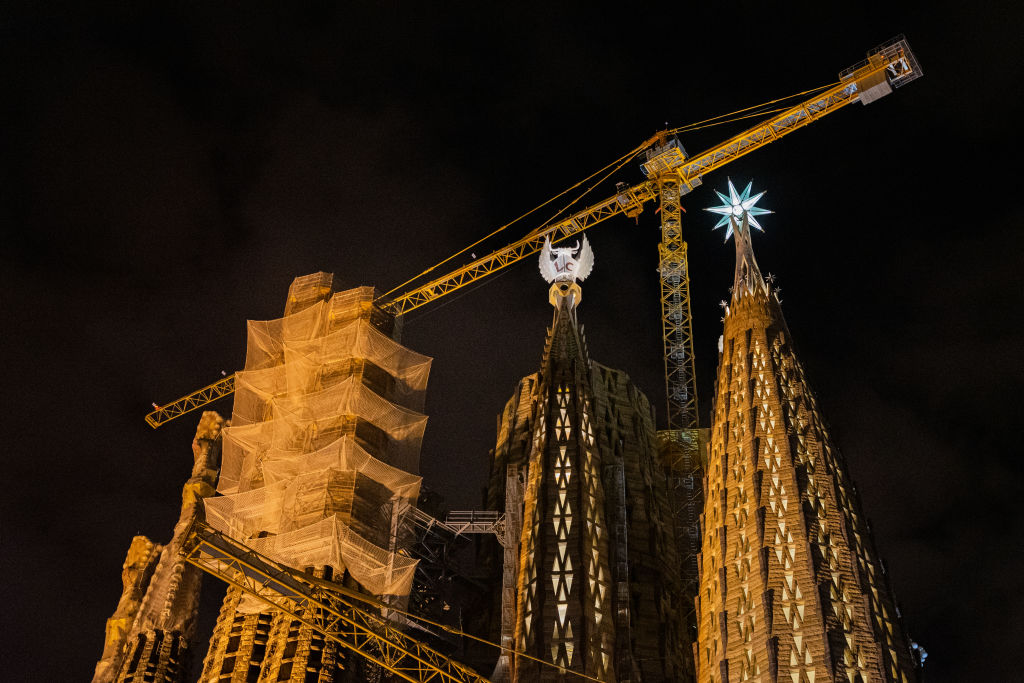
The towers of the evangelists Lluc and Marc are lit for the first time at the Sagrada Familia, thus commemorating the completion of its construction in Barcelona, Spain, on December 16, 2022. Photo: Marc Asensio/NurPhoto via Getty Images.
Salvador Barroso Moreno, a lawyer who has also lived in the neighborhood for over thirty years, describes the staircases proposed dimensions as “completely out of place” in today’s city. Speaking to Artnet News, he expressed a vitriol for the landmark which is shared by many locals. “I doubt that the Sagrada Familia is good for Barcelona. The city has other much more interesting monuments,” he said, mentioning Gaudís Casa Batlló and the Hospital de Sant Pau, another modernist building. “These have not received the same marketing and publicity as the Sagrada Familia.”
It has hardly helped local residents warm to the basilica that it is now a tourist hotspot. Frustration about the overwhelming influx of visitors is a gripe that resounds across the city of Barcelona, which has seen rental prices shoot up in response to the popularity of Airbnb, less space on sidewalks and public transport, and the booming business for restaurants, bars and souvenir shops at the expense of other endeavors.
The district of El Poblet was a rustic village when construction began on the Sagrada Familia. “It has been transformed into a theme park,” said Prats. “We want a district for living. Our opinion is that the only acceptable tourist should be one that respects local life and who comprehends our beautiful city.”
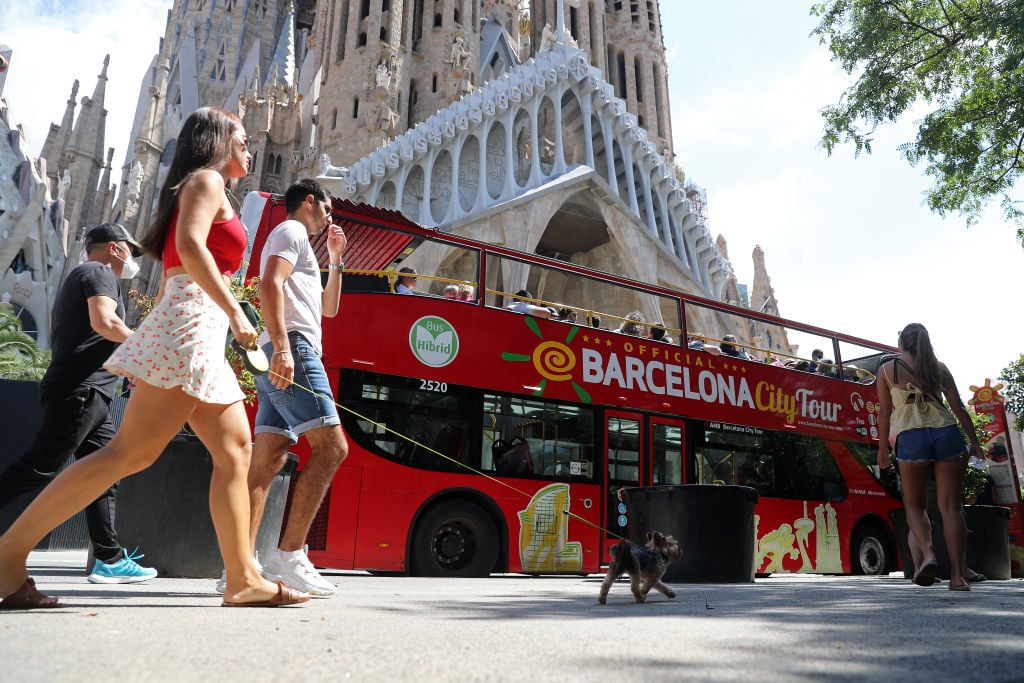
A tour bus outside the Sagrada Familia. Photo by Urbanandsport/NurPhoto via Getty Images.
The Association of Neighbors has been undertaking what Prat termed “vindictive actions,” to try and halt progress on the monument. Eight years ago they attempted to propose to the then-mayor Xavier Trias an alternate, compromised version of the plans for the entrance that would reduce the width of a proposed avenue that would lead up to the staircase and glory facade from 60 to 50 meters, preserving a significant number of the surrounding homes.
Although they felt Trias to be a sympathetic ear, all this changed when Ada Colau became mayor of the city in 2015. Prats alleges that the city council negotiated with the Junta del Templo without even consulting the Association, effectively giving it the all clear to continue work on the basilica (including the Glory facade) by issuing a construction permit in exchange for a financial contribution intended to help combat the negative effects of tourism on the district.
Prats said the locals felt “isolated and irritated,” and not long after another association, the Association of Neighbors Affected by the Construction of the Sagrada Familia (Afectats pel Temple), was born. Barroso Moreno claims that this permit is also what triggered the neighbors’ lawsuit against the council, citing that the Glory facade may not be part of Gaudí’s original plans.
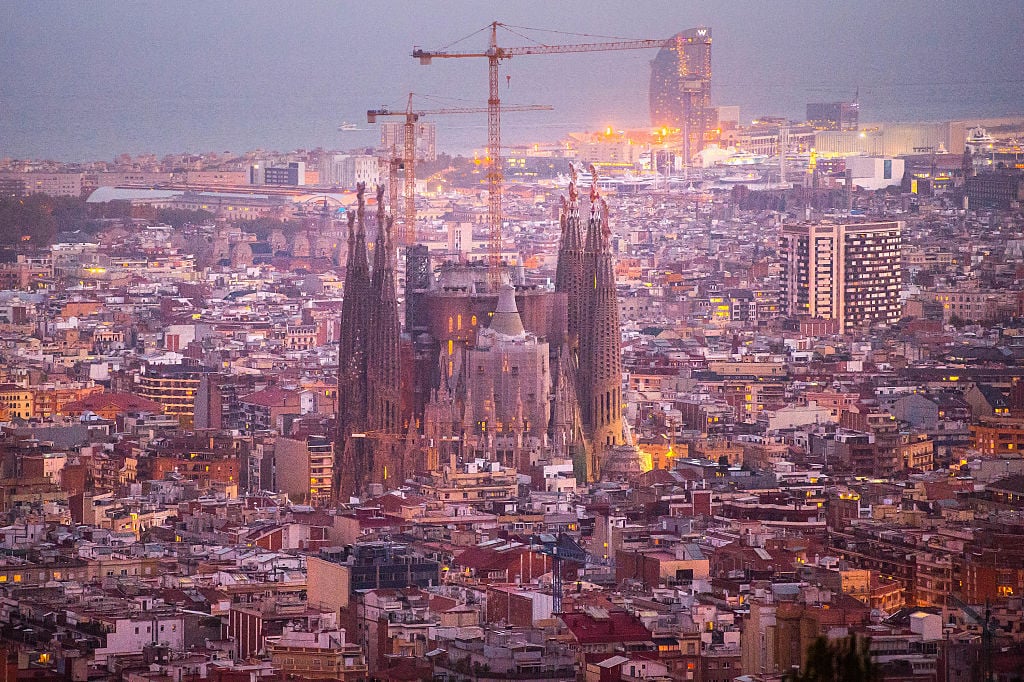
Sagrada Familia on the Barcelona skyline. Photo by David Ramos/Getty Images.
Progress towards some sort of resolution for the residents was made in early 2020 during a meeting between the city council and nine interested organizations, including both neighborhood associations and the Junta del Templo. The meeting on March 5 established four key points to consider: respect towards housing rights, the maintenance of public facilities and green areas, tourism control, and the completion of the basilica.
But what little advances were made were soon derailed by the pandemic. According to Prats, the meetings never started up again after lockdown, “in spite of our insistence.”
Still, some hope emerged in the spring of last year when the city council allegedly summoned both associations to a meeting with Janet Sanz, a councillor specializing in Ecology, Urbanism, Infrastructures and Mobility, and the council’s chief architect Javier Matilla. The associations agreed with three alternate urban plans that were proposed as possible compromises between all the interested parties, leaving the council to negotiate with the Junta del Templo. The council has since proposed a fourth plan that Prats says is “even better than the previous three.” He was unable to reveal more information yet about any of these favorable proposals, which are confidential, but claims they have not yet been approved by the Junta—which has historically been loathe to compromise on what it understands to be Gaudí’s original vision.
Any chance of a quick decision being made has been delayed by the forthcoming municipal elections on May 28, which locals believe will play a hand in determining whose interests are eventually prioritized. According to Prats, most residents are hoping for a win for either Colau, of the left-wing party Comuns, or Ernest Maragall, of the ERC (Republican Left of Catalonia). Meanwhile Jaume Collboni, of the center-left PSC (Socialists’ Party of Catalonia), would be the worst case scenario said Prats. “His sympathies go to the maximum progress of tourism, not to the neighbors’ problems.”
A representative for Barcelona’s city council confirmed to Artnet News that meetings have been taking place with all the interested parties “to reach the maximum possible consensus” on “a situation that is complex and where there are legitimate interests that are obviously distant.”
More Trending Stories: